Out of Africa
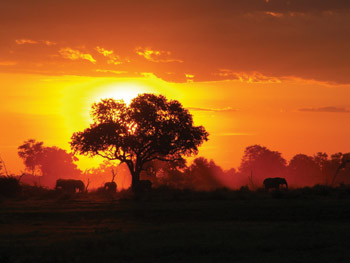
Long has South Africa been overlooked by wine buffs in search of a classy drop, but certain producers are determined to show just what the region can do
13 October 2008
It may come as a surprise that, since 1992, South African wine exports have increased by almost 1200%. It produces more than 3% of the world’s wine and is now the ninth largest global producer. Last year, its total wine exports amounted to around 272m litres.
South African winemakers are far from euphoric, however, as the global economic clouds gather. In their domestic market inflation is now well above 10% and although the pound sterling and euro have risen sharply against the South African rand, improving the wine’s competitiveness in Europe, there have been unpredictable fluctuations against other currencies, making market predictions difficult.
Making progress
Because it is generally a warm climate area, producers and consumers have tended to focus on red wines. While there has always been a wide range of good quality reds, vine disease problems and unsuitable site selection tended to hamper potential, with many reds, especially cabernets, tasting burnt and lacking in acidity.
Over the last couple of years, these issues have begun to resolve. Better training amongst vine growers has seen improved matching of grape to geographical location, while a greater number of high quality coastal and hill sites have been identified. The management of viruses in grapes has never been easy in South Africa but steady progress is being made.
Results are showing in the bottle and, although much of the recent increase in South Africa’s wine sales has been on the quantity rather than the quality side, there has been a great improvement in wines over the €8 mark, with reds being fresher and fruitier than they used to be, while whites are also cleaner, more concentrated and tending to have better acid balance.
The flagship grapes of South Africa have been the white chenin blanc and red pinotage, the latter celebrated despite being less than 8% of vine plantings.
For a long time most South African chenin was off-dry in character but there has been a gradual move to drier, more classically French styles. Pinotage has been much derided and there is no doubt it needs care in planting – old bush vines being best – and also in vinifcation. But when it’s well made, it is splendid stuff; warming, velevety and laden with strawberry and plum fruit. Flavours can veer toward the medicinal and it can run to over-soft structure in warm situations. Some growers have been experimenting with blends aimed at counteracting these problems, adding a little white viognier, for example, to add sweetness and succulence or, perhaps, shiraz or mourvedre for additional tannic structure and colour. The results have been highly encouraging.
Bordeaux style cabernet and merlot blends have long been the cornerstone of South Africa’s premium reds and that’s still the case. Shiraz plantings have been steadily increasing. The variety is ideal for South Africa’s range of moderately warm to very warm situations, with result that there are now a number of wines comparable to the classic bottlings of the French Rhone, as well as a selection of easier drinkers in spicy, rich fruit style.
Coastal regions of the western Cape have proved a haven for high quality sauvignon blanc and again, there’s a range of styles, from the classic Sancerre-like to richer, lime and apple driven styles similar to those of New Zealand.
Quality control
So where to now for South Africa? Regionality has been talked of but South Africa needs to lay down firmer foundations in the international consumer market before it really needs to worry about that. First must come the task of convincing wine buyers that there is real quality to be found in South Africa’s premium wines. In the meantime, it is well placed to grow entry point share, probably at the expense of Australia.
But wines must have clean, well defined fruit, with no overcooked reds. Despite some recent glitches, the Kumala brand has performed well and there are several other useful labels capable of driving extra volume in Europe. Links with the Fairtrade movement are proving beneficial; South Africa has more Fairtrade wines than any other region and while the main purpose of the designation may be ethical, it is likely also to increase market share further.
Here’s some of what we tasted recently and the evidence was of a real upswing in quality compared with a few years ago. Prices are approximate retail.
WHITE
Golden Kaan Sauvignon Blanc 2007 (Ampersand €8). Very decent for the price, with lively green fruit and a hint of tropical lime. There’s a similarly appealing sister wine, Chardonnay 2006, at the same price.
Kleine Zalze Chenin Blanc 2007 (Allied Drinks, €10). Touches of France in the firm apple and green fruit, with its clean, zesty finish.
Boschendal 1685 Grand Cuvee Sauvignon Blanc (Barry Fitzwilliam Maxxium €13). A few euro more gets you something in the style of a Pouilly Fume; elegant wine for a fish dinner.
Fleur du Cap Chenin Blanc 2007 (Febvre €13). Shows exactly how South Africa has begun to handle chenin blanc; nice varietal style with a streak of fresh goosberry.
Vergeglen Chardonnay 2003 (Gleeson, €13.50). Nicely made, with well judged oak and a bit of lees-stirring to add some nutty depth; enjoyable and elegant.
False Bay Chenin Blanc 2006 (Gleeson €10). Classic chenin green and stone fruit aromas. It’s a little softer than the French style but it’s got some of that classic tight green fruit with just a touch of honey. Great for the price.
Thandi Sauvignon Blanc Semillon 2007 (Findlater Grant €10.99). One of the original black empowerment labels, Thandi is now a Fairtrade wine. Light, green apple flavours with a certain depth lent by the subtle nut and lemon streak imparted by the semillon.
Arniston Bay 2007 Chenin Blanc Chardonnay (Findlater Grant €9). Quite rich for its price point, with tasting melon and ripe citrus flavours. Great party wine.
Danie de Wet Chardonnay d’Honneur 2007 (Findlater Grant €13). Aims at a Burgundian style; zesty citrus underpinned by some evolving honey and toast notes.
REDS
Golden Kaan Cabernet 2006 (Ampersand €8). With the party season coming up, this has tasty warm fruit, perfect for those buffets of beef in red wine or cold meats.
Fairview Pinotage Viognier 2007 (Gilbey €17). This is a lovely demonstration of the new South African approach to pinotage. The soupçon of viognier adds a welcome succulence but the wine is still firm and elegant. It’s not a cheapie but I think it’s well worth its price as a special treat.
Fleur du Cap Pinotage 2005 (Febvre €16). This is more traditional pinotage. Nicely matured, it has soft and warming strawberry and plum fruit with a streak of allspice.
Kanonkop Kadette 2004 (FindlaterGrant €10.99). From one of South Africa’s most venerable wine houses, this is another blend, featuring pinotage with cabernet, to add structure, and merlot to soften the fruit. Ready to drink now, this would be a good choice with winter roasts.
Goats do Roam Red 2007 (Gilbey €10.99). I really hate the name, but if it delivers the sales…The wine’s not bad, with a warm, hearty character for winter drinking. Good with meat pies and steaks. Goats do Roam in Villages 2006 (€15) is a decent trade up; a shiraz, pinotage and mourvedre blend which works beautifully with beef casseroles.
Rudera Syrah 2003 (Mackenway €23). Stylish premium stuff which is quite close to syrah styles in the Rhone valley. With black olive, damson and plum flavours, decent structure and good balance of acidity and alcohol, this might be one to add to the seasonal gift list.
Vergeglen Mill Race 2004 (Gleeson €13.50). Bordeaux blend with a warm touch. Ripe black fruits, hints of cherry and nicely integrated spice. Good value and great with roast beef or game.
SPARKLING
Pongracz Methode Cap Classique (Febvre €23). A satisfyingly chunky bottle proclaims the festive credentials of this one. Made in champagne style from pinot noir and chardonnay, it has a busy bubble, with slightly creamy green fruit flavours and fine acidity to cleanse the finish.
Drosty Hof Sparkling Brut (Febvre €19). This is made from Chenin Blanc so it’s more like sparkling Saumur than Champagne. Fresh, approachable aperitif and at just 11.5% alcohol it’s good for kicking off a party or at a special lunch.



 Print
Print

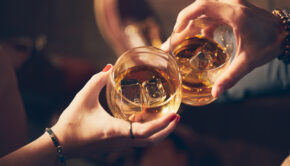
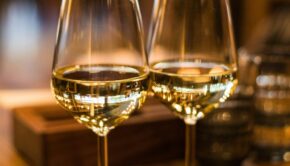
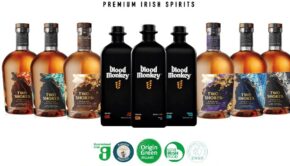
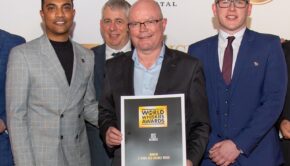

Fans 0
Followers